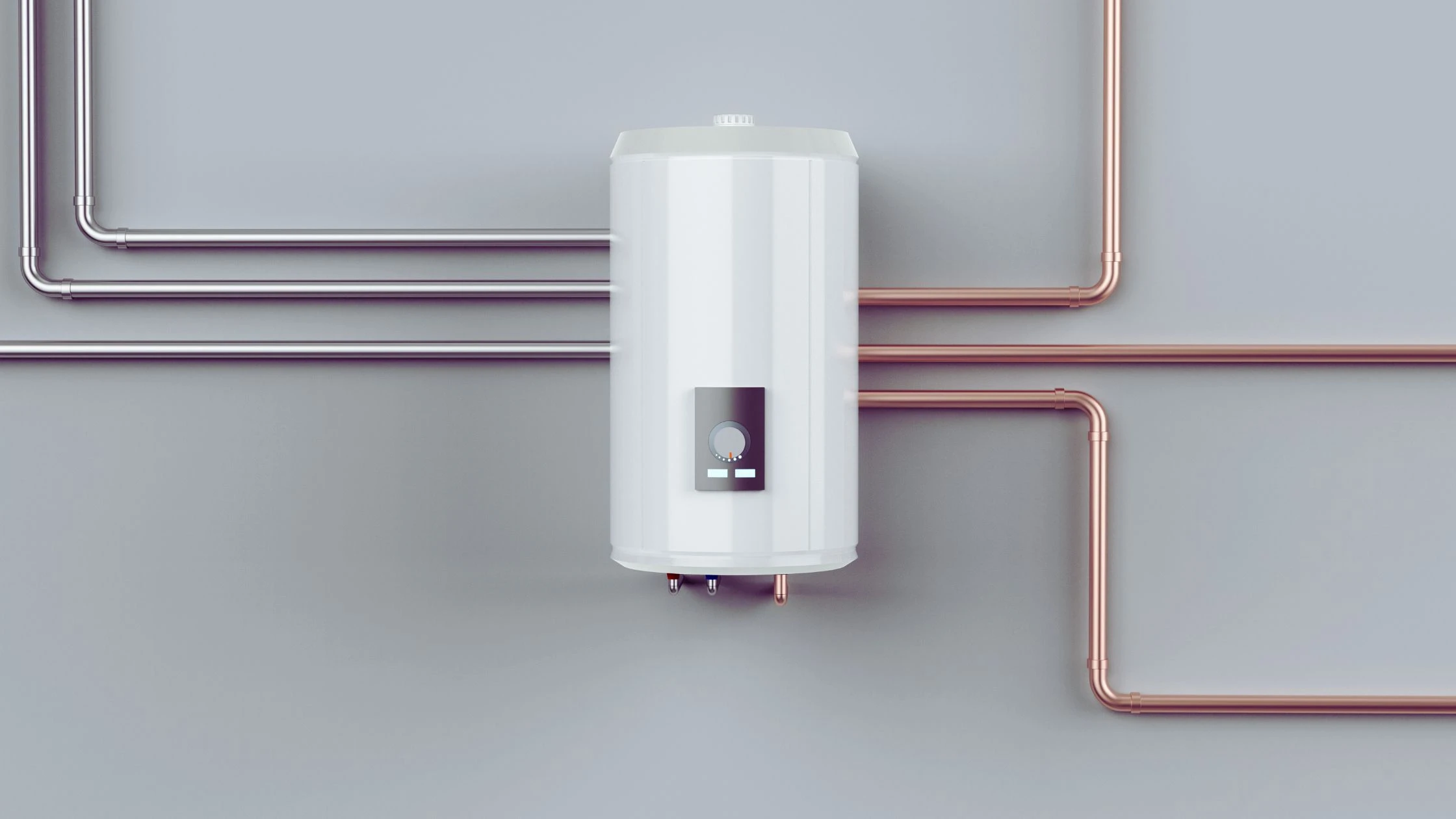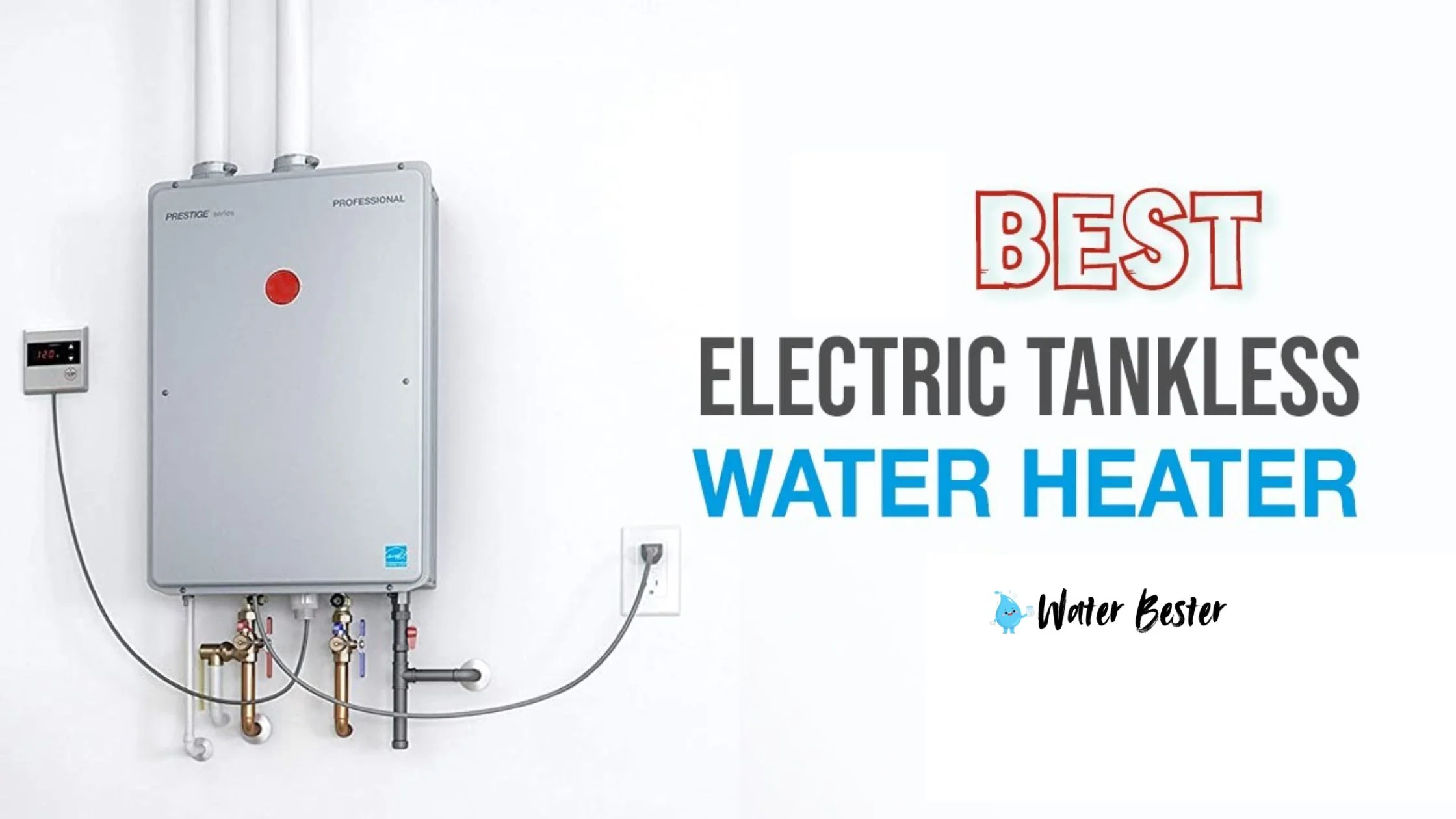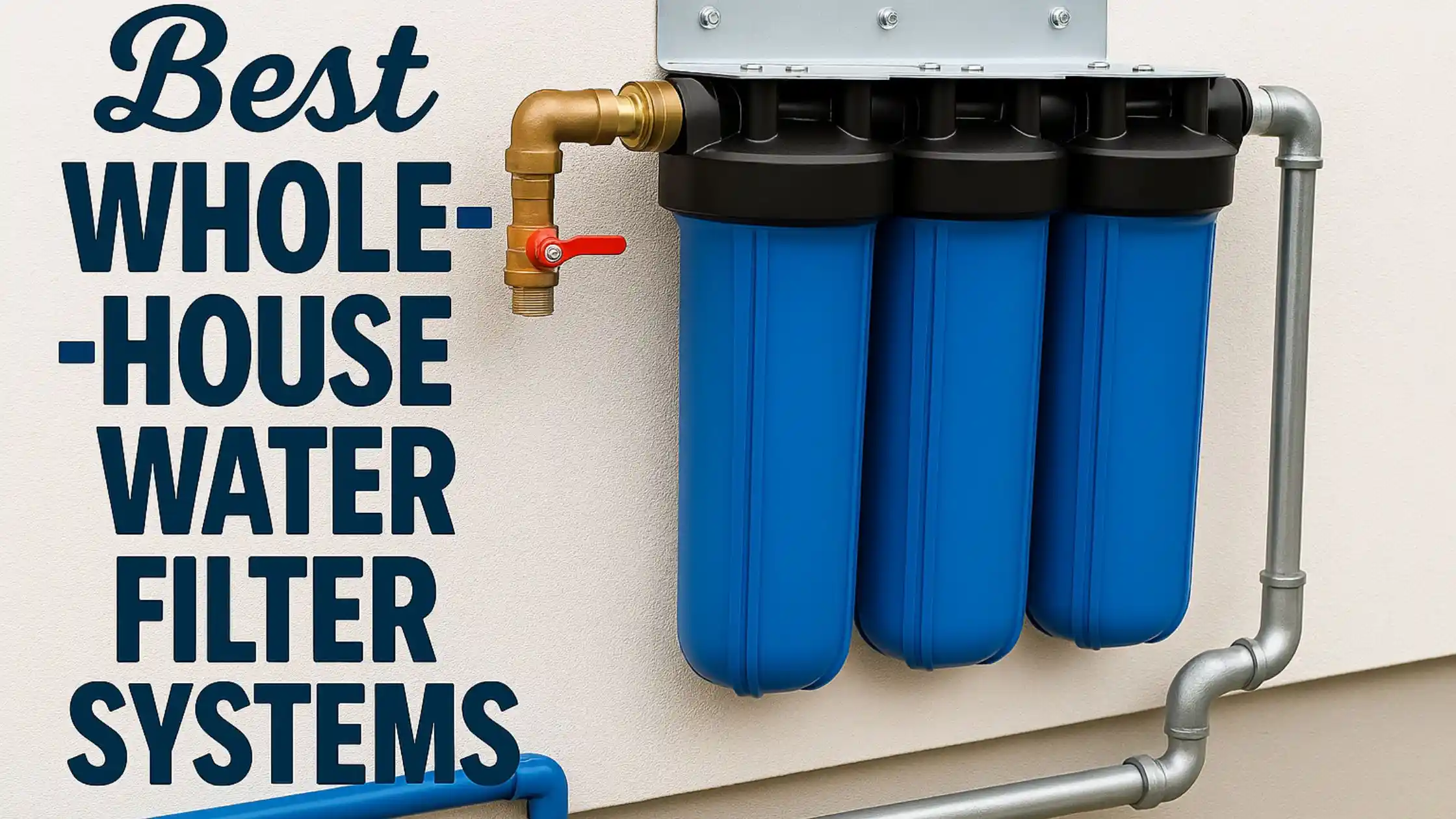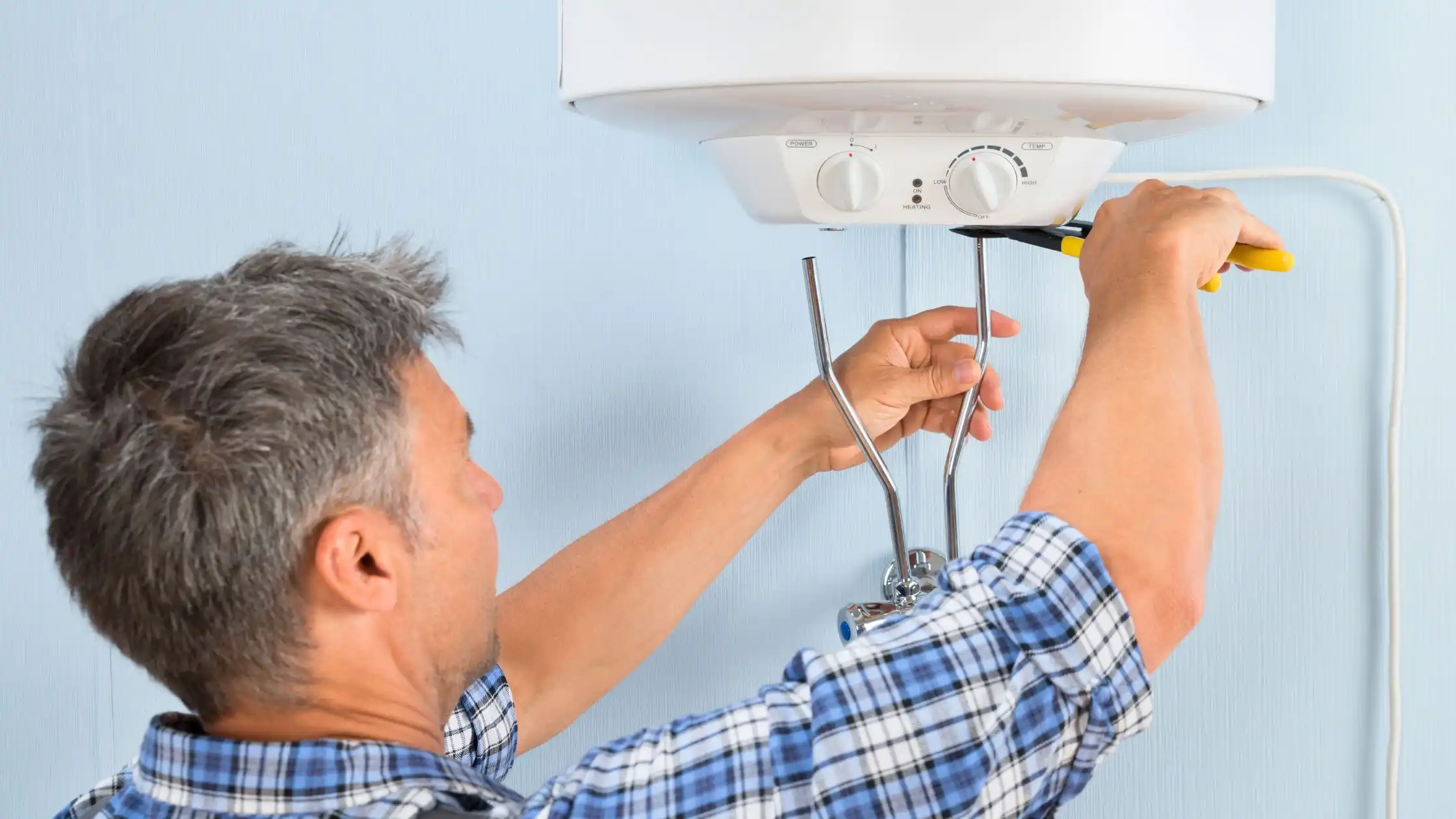Finding water pooling around the top of your water heater can be quite alarming. A commonly known issue at home needing an urgent eye, as it can represent anything from a simple and easily adjustable defect to a serious one that would need expert help or a complete overhaul. This exhaustive guide will help you understand what causes Water Heater Leaking From Top, how to assess the dangers, and when the solutions are what they need to be.
Can a Water Heater Leak From the Top be Dangerous?
Absolutely, a leaking water heater can be hazardous to your home and loved ones. The amount of danger depends on a lot of things:
- Electrical: Water and electricity don’t mix, which opens up the possibility of shorts, sparks or even electrical fires
- Structural damage: Ongoing leaking can damage ceilings, walls and floors — and that could make way for mold to grow.
- Gas hazards: In natural gas water heaters, gas-connect leakage can cause valve damage or corrosion.
- Scalding risk: Certain leaks may result in sudden geysers of hot water, particularly around pressure-relief systems
A top leak is usually less catastrophic than a bottom leak (a bottom leak often signals tank failure), but should never be ignored or delayed for repair.
Why Is Your Water Heater Leaking From The Top?
Knowing why the top of your water heater is leaking is essential to proper solution. The most common culprits are the following:
1. Cold Water Inlet Valve Issues
This is one of the most common causes of top leaks as well, as the inlet valve for cold water is the entry point for water to enter your water heater. The connections between the valve and the water supply line can loosen over time, courtesy of vibration or temperature fluctuations.
Inside the valve assembly, washers and gaskets can deteriorate after years of use. These rubber parts are meant to make the hermetic seals, but in the long run, they do wear out. Corrosion surrounding the valve assembly can also weaken it, too, particularly in homes with hard water or older water heaters.
2. Problems with Temperature and Pressure Relief Valve
The temperature and pressure relief (T&P) valve is a safety device that relieves pressure if the tank is exposed to dangerous amounts of heat or pressure. Once this valve starts leaking, it could mean one of several things:
- The valve itself has a problem or is corroded
- Internal pressure in the tank is too high; the valve opens to let out some water as a safety mechanism.
- The valve was not properly fitted or has become loose over time
- Mineral build-up or debris has kept the valve from sealing properly
Be aware that in some cases, a leaking T&P valve may be working properly, as it would be allowing excess pressure to escape. This may be a sign of other problems with your water heater or plumbing system that should be resolved.
3. Anode Rod Connection Leaks
The anode rod plays a crucial role in extending your water heater’s life by attracting corrosive elements that would otherwise damage the tank. This sacrificial rod connects to the tank through a threaded fitting at the top. Over time, this connection can become a source of leaks if:
- The threading wears down
- The seal around the rod deteriorates
- The rod was improperly installed during replacement
4. Condensation vs. Actual Leaks
What appears to be a leak might actually be condensation forming on the cool exterior of the water heater when it contains hot water. This phenomenon is particularly common with:
- New water heaters
- Significant temperature differences between the tank and surrounding air
- Rooms with high humidity
- Water heaters that have been used heavily after a period of inactivity
While condensation isn’t a true leak, the resulting moisture can still cause damage if it’s allowed to accumulate over time.
5. Water Heater Leaking From Top Vent
Gas water heaters rely on a venting system to safely remove combustion gases from your home. When moisture appears around the top vent, it could be due to:
- Condensation forming in the vent pipe as hot exhaust gases meet cooler air
- Improper vent installation creating gaps where moisture can escape
- Physical damage to the vent pipe or draft hood
- Blocked venting causing exhaust gases to cool and condense
This situation requires immediate attention, as it can also allow carbon monoxide to build up in your home.
Natural Gas Water Heater Leaking From Top: Special Considerations
Gas water heaters have unique components that can leak from the top. This creates situations that often require specialized knowledge to address safely.
| Component | Leak Concern | Risk Level |
|---|---|---|
| Gas control valve | Water near gas components | High – Immediate professional attention required |
| Pilot light assembly | Water preventing pilot light function | Medium – Professional repair recommended |
| Thermocouple/thermopile | Water affecting gas safety devices | High – Safety hazard requiring professional repair |
| Burner assembly | Water causing corrosion or inefficient heating | Medium to High – Professional evaluation needed |
When a natural gas water heater is leaking from the top, the situation often requires professional evaluation due to the potential safety hazards involved with gas components.
When Your Water Heater is Leaking From Top and Bottom
Finding leaks at both the top and bottom of your water heater presents a particularly serious situation that requires immediate action. This typically indicates:
- Multiple, unrelated issues occurring simultaneously
- A severe internal problem affecting the entire tank
- A catastrophic failure that requires immediate replacement
When facing leaks from both ends of your water heater, follow these steps:
- Turn off the power source (electricity or gas)
- Shut off the water supply
- Contact a professional immediately
- Consider emergency water heater replacement
Diagnosing a Tank Water Heater Leaking From Top
To properly diagnose a top leak, follow this systematic approach:
Visual Inspection
Carefully examine all components at the top of the tank, including pipes, connections, valves, and the tank itself. Look for obvious signs of moisture, rust, or mineral deposits that might indicate a slow leak.
Dry Test
Wipe all areas dry, then observe where moisture first appears. This can help pinpoint the exact source of the leak, especially when dealing with slow drips that are difficult to trace.
Pressure Test
If no obvious leak is found through visual inspection, a professional can perform a pressure test to identify hidden leaks.
Age Assessment
Consider the age of your water heater. Units over 10 years old are more prone to developing multiple issues, and what appears to be a simple top leak might actually be one symptom of a failing system.
Solutions for Water Heater Leaking From Top
The appropriate solution for your water heater leak depends on the cause, severity, and age of your unit. Here are your options:
DIY Solutions
For minor issues, homeowners can often address the problem themselves:
- Tightening connections: Using the appropriate tools, carefully tighten loose fittings or connections (but avoid overtightening)
- Replacing washers and gaskets: Install new seals where old ones have deteriorated
- Adjusting temperature settings: If the T&P valve is activating due to excessive pressure, lowering the temperature can help
- Replacing the T&P valve: A moderately complex DIY project requiring water and power shutoff first
Professional Solutions
Some situations warrant professional intervention:
- Component replacement: When specialized parts like the gas control valve need replacement
- Rethreading connections: If threads are damaged but the tank is otherwise sound
- Pressure regulator installation: To address chronic high-pressure issues
- Complete system evaluation: When multiple issues are present or the cause isn’t clear
Replacement Considerations
This table compares when repair versus replacement makes more sense:
| Factor | Repair Recommended | Replacement Recommended |
|---|---|---|
| Age of unit | Under 8 years | Over 10 years |
| Repair cost | Less than 30% of replacement | More than 50% of replacement |
| Leak source | External connections | Internal tank corrosion |
| Efficiency | Current unit is efficient | Significant efficiency gains are possible |
| Frequency of issues | The current unit is efficient | Multiple recurring problems |
Preventive Measures to Avoid Water Heater Leaking From Top
Regular maintenance forms the cornerstone of leak prevention. Follow these preventive measures:
- Regular inspections: Examine your water heater annually for signs of wear, corrosion, or minor leaks
- Anode rod replacement: Replace every 3-5 years depending on water quality
- Pressure testing: Have a professional check pressure relief mechanisms every 2-3 years
- Water quality management: Consider a water softener in hard water areas
- Expansion tank: Install to prevent pressure-related issues, particularly in homes with closed plumbing systems
- Temperature control: Maintain 120°F (49°C) for optimal safety and efficiency
When to Call a Professional Immediately
Don’t hesitate to call a professional if:
- You have a natural gas water heater with any leak near gas components
- The leak is substantial and cannot be stopped by shutting off the water supply
- You notice any signs of electrical issues (sparking, buzzing)
- The T&P valve is constantly releasing water
- You’re uncomfortable performing any DIY diagnostics or repairs
Comparing Gas vs. Electric Water Heater Top Leaks
| Aspect | Gas Water Heater | Electric Water Heater |
|---|---|---|
| Common leak points | Inlet, T&P valve, vent, gas control valve | Inlet, T&P valve, element connections |
| Danger level | Higher (gas components) | Lower (but still electrical risk) |
| DIY repair accessibility | Limited due to gas components | More accessible for basic repairs |
| Professional repair cost | Generally higher | Usually lower |
| Signs of serious issues | Pilot light problems, gas smell, vent issues | Tripped breaker, heating inconsistency |
Conclusion
If the answer is yes, your water heater leaking from the top could be a cause for concern but it is not always a sign of disaster. But by learning the common causes, how to assess severity, and when to try a DIY fix vs calling in a professional, you can handle the situation effectively while limiting damage and danger.
Note that no matter what, water heater safety should be first always. If unsure, you always want to take the conservative approach and consult with a licensed plumber or water heater professional who can provide guidance for your unique situation.
However, routine care is your best protection against surprise leaks, and a properly functioning water heater can add years to the life of the appliance and ensure performance and safety within the home. By staying proactive and catching small problems early, you can prevent the hassle and cost of a big water heater failure.









